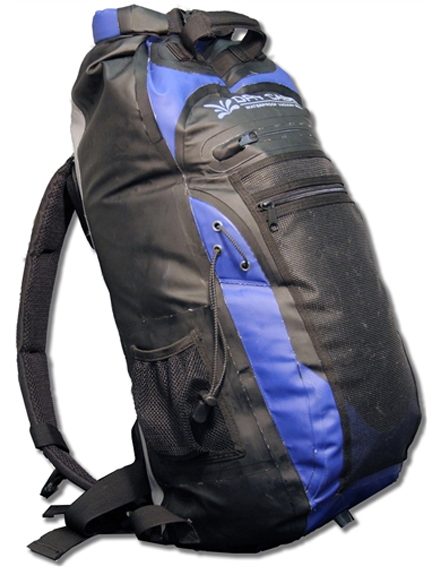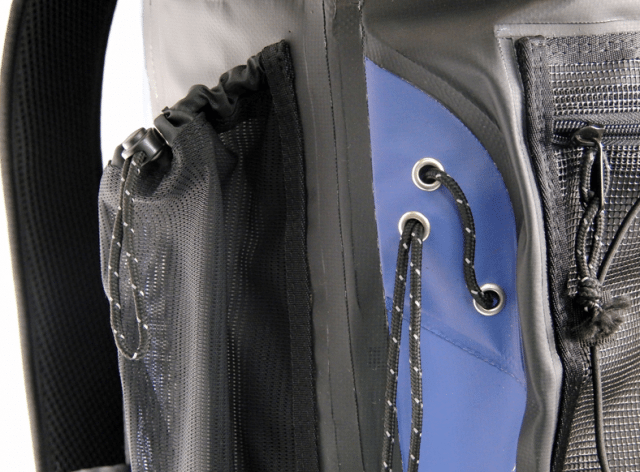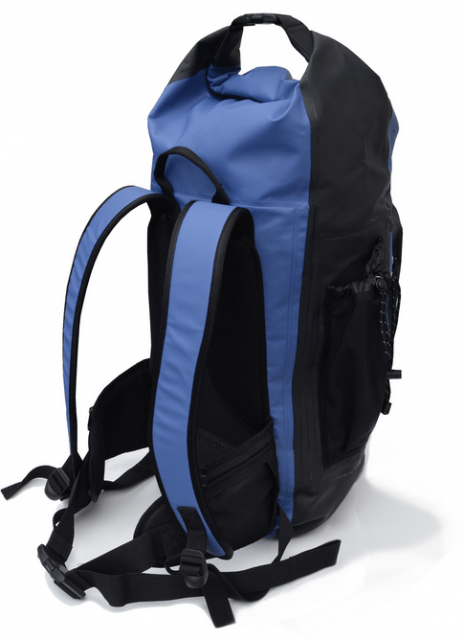
Dry Case Waterproof Backpack
Stated Volume: 30L
MSRP: $89.99
Reviewer Info: 5’10’’, 170 lbs.
Days tested: 7
Locations: Colorado River, Gila Wilderness
As a whitewater rafter and kayaker, I spend a significant portion of my time in and around water. I also happen to be a photographer, and DSLR cameras do not mix well with aquatic environments.
With this in mind, I am always on the lookout for dry gear that can protect my expensive electronics in a variety of conditions. And there’s no one solution for every situation.
Dryboxes like the PelicanCase offer the best protection, but they’re heavy and cumbersome. When I’m kayaking, I often use a Watershed Ocoee duffel with a padded liner. The Ocoee is great because it’s bone-dry and well-padded, but it has a small carrying capacity and isn’t ideal for hiking.
The Dry Case Pack is a small roll-down dry bag with backpack straps. I did several day hikes with the Dry Case Pack and brought it on a four-day rafting trip in Utah.
Comfort, Capacity, and Features
The Dry Case occupies a nice niche in the world of dry bags since it has backpack straps and a “standard” daypack volume (30L). This pack is much easier to carry for short hikes than a duffel like my Watershed Ocoee.
The straps are comfortable and don’t chafe against bare skin, which is nice if you’re just going for a wet hike in your swimsuit. The pack also has a bit of padding for your back, which gives the bag a bit more structure even though it doesn’t have an internal frame.
I think the pack has less than the advertised 30-liter storage capacity, given that it loses a lot of its volume when you roll down the top to seal it.
When fully loaded, the backpack was somewhat uncomfortable to carry since the straps were difficult to adjust. With a heavier load (~14 or 15 lbs.), the pack just didn’t sit well on my back. For example, I tried to carry a heavy camera setup in the bag (two lenses and a 5D MK III body), but since the pack doesn’t have much structure, I could feel the lenses pushing into my back.
That said, when I was carrying just a few spare layers and a lunch, the pack was very comfortable. So as long as you don’t anticipate putting more than ~10 lbs. of gear in this backpack, it should serve you just fine for short trips.
I was excited to see that the Dry Case pack features a waist belt, but unfortunately in this case, the belt didn’t fit me quite right. When I had the shoulder straps fully cinched down, the waist belt sat just above my hip bones. If you’re shorter than me, or prefer to keep the shoulder straps looser, this shouldn’t be an issue.
There are mesh pockets on the back and sides of the pack where you can easily store water bottles or other odds and ends that don’t need to be kept dry.

Finally, the Dry Case Pack also has a purge valve that allows air to exit the pack as you roll down the top. I really appreciated this feature since it helps seal the bag and makes it more compact.
Dryness
The Dry Case pack stayed very dry after short periods in the water. I tested the pack by holding it fully submerged for two minutes in a calm pool of water—it was perfectly dry after this test. As a result, I didn’t fear for my belongings if I were to slip and become fully submerged during a stream crossing.
The only time that the Dry Case did let water in was when it was submerged for over 15 minutes while attached to a capsized raft in Westwater Canyon of the Colorado River. Granted, none of the other roll-down style drybags on the raft stayed dry either after the violent thrashing…
Durability
While it’s tough to gauge durability after only seven days, the backpack’s material is pretty thick and nothing has fallen apart yet. The mesh pockets on the outside of the pack also seem to be pretty durable—no issues there.
Bottom Line
When it comes to dry bags, there’s a tool for every situation. The Dry Case is an excellent option if you’re looking for a bag for day hikes where there’s the potential of getting wet. It handles lighter loads, such as a few spare layers, a lunch, and a small camera, well. I think it would also be a very useful piece of gear for commuters who walk or bike to work in a rainy place.
If you plan on carrying heavier loads or exploring more turbulent waters, I’d suggest looking at another pack with a larger carrying capacity and a zipper-style seal.

